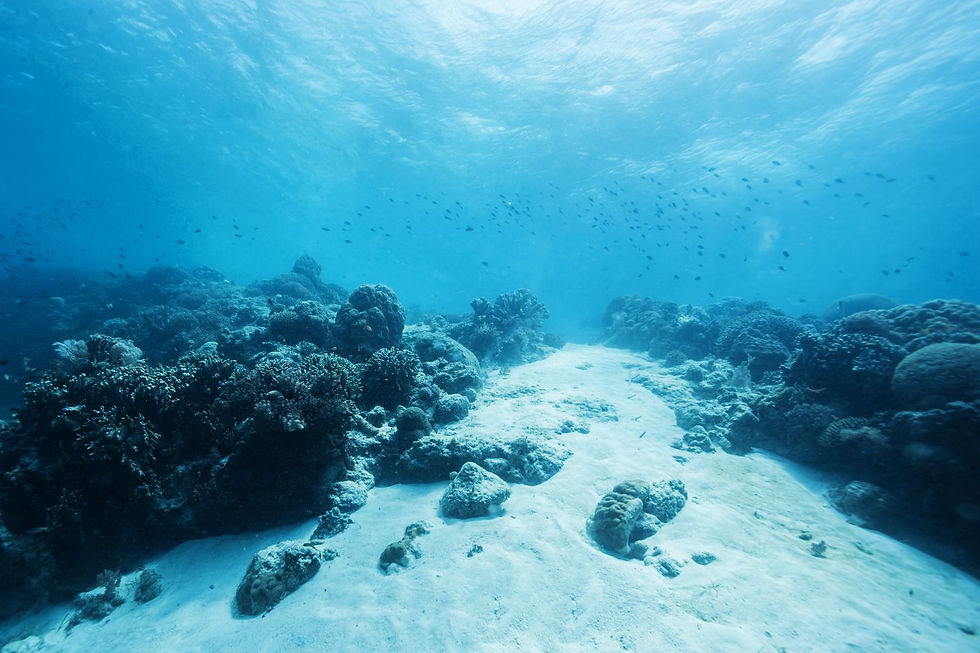Four Takes: to save the oceans, fall in love with them, The Boston Globe
- MJ Andersen
- Sep 28, 2021
- 3 min read

September 27, 2021
Sometimes the impulse to seek our own image in nature runs aground. Consider the anglerfish. The female — beady-eyed, needle-toothed, and mirthless — is built to dominate. The male, far smaller and toothless, must latch onto her side to nourish himself, and provide sperm on demand.
Edith Widder wisely leaves us to make of this what we will. Her main focus is the rod protruding from the female’s upper lip, which functions like a fish version of a flashlight. A marine biologist and MacArthur Fellow, Widder is one of several authors who have recently written about the oceans, in an urgent drive to protect them. Her specialty is bioluminescence, the mysterious phenomenon by which sea creatures emit their own light. In “Below the Edge of Darkness: A Memoir of Exploring Light and Life in the Deep Sea,” she takes readers on a tour of underwater marvels.
Widder fears that, in the face of climate change, too many of us have succumbed to eco-despair. Her remedy is ramped-up exploration, and wider exposure to the wonders she so infectiously details. (Take it from this woman who has descended 800 feet in a submersible: it looks like the Fourth of July down there.)
As Widder notes, the largest living space on the planet remains relatively unexamined. Yet recent technological advances have helped researchers go far deeper than before, uncovering multiple life forms where it had long been assumed none could thrive.
Though Widder does her best, the bizarre world underwater would tax anyone’s descriptive powers. Fortunately, in 2012 she was able to assist in the first successful filming of a giant squid — to her, marine biology’s holy grail. (The resulting documentary first aired on the Discovery Channel the next year.) As long as firsthand exploration remains open to only a few, such work will surely be vital to the conservationist cause.
In “The Brilliant Abyss: Exploring the Majestic Hidden Life of the Deep Ocean and the Looming Threat That Imperils It,” Helen Scales provides a broader, historical perspective on our relationship with the sea.
A marine biologist based in England, Scales notes that for much of human history, the deep was thought of as the home of gods and monsters. By the 19th century, however, skepticism that there was much of anything down there was widespread. Views have since changed. We now know that the oceans contain such a gob-smacking multitude of species that, according to Scales, scientists are still far from tallying them all.
In the meantime, threats to the ocean’s well-being have sharpened. The sea’s capacity to absorb heat linked to global warming has helped keep land temperatures lower than they might be, but at a cost to marine life. Pollution from plastics, oil spills, fertilizers, and more have added to the destruction underwater. Growing interest in mining the seabed for so-called rare earth and other metals is of particular concern to Scales. She sees a stark tradeoff between extractive activities, presumed to endanger biodiversity, and the medical advances that could come from harvesting natural products. One example: a chemical found in a sea sponge has helped prolong lives in cases of metastatic breast cancer.
Still, it is hard to rally around things we normally cannot see. Perhaps one way of building conservationist support is to tap into humans’ fascination with seashells. In “The Sound of the Sea: Seashells and the Fate of the Oceans,” Cynthia Barnett offers a lively cultural history, with references ranging from Aristotle and Leonardo da Vinci to Italo Calvino.
A dedicated beach comber since childhood, Barnett has a sharp eye for interesting facts. Neanderthals gathered inch-wide cockles. Shells known as cowries became a dominant currency in the slave trade (an example was found in the subfloor of the slave house at Monticello). Royal Dutch Shell’s corporate moniker can be traced to a modest London curio shop. Barnett even runs down the origins of the tongue-twister “she sells seashells by the seashore.” Nevertheless, she laments what could lie ahead, as the mollusks that create these miniature homes succumb to habitat destruction.
Meanwhile, Philip Hoare laments all that we have done to cetaceans. In “Albert and the Whale: Albrecht Dürer and How Art Imagines Our World,” he ponders the artist’s failed quest to observe a whale that washed up on the Dutch coast in 1520.
Beached whales were once regarded (and feared) as mysterious messengers from the divine, a mystical connection Hoare seemingly yearns to recover. Human cruelty toward these animals forms a strong undercurrent in this richly allusive but sometimes frustratingly oblique account. The object of Hoare’s own quest is less actual whales than Dürer’s access to the ineffable. Today’s marine biologists might simply redirect us. As Widder would insist, the magic not only remains; it mostly still awaits our discovery.




Comments